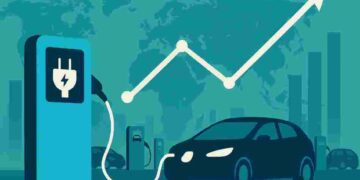Electric Vehicle (EV) charging infrastructure—the backbone of electrified transport—is undergoing explosive growth as governments, OEMs and energy companies pour capital into stations, networks and smart‐grid integration. With a projected CAGR of 35% over the next decade and a market value expected to top USD 140 billion by 2030, stakeholders must understand product trends, key players, trade flows and regional dynamics to stay ahead.
Market Overview & Growth Drivers
- Rapid EV Adoption: Global EV stock surpassed 15 million in 2024, fueling demand for both AC (residential/slow) and DC (fast/ultra-fast) chargers.
- Government Incentives: Subsidies, tax credits and low-emission zones in North America, Europe and China are accelerating public and private investment.
- Smart & Sustainable Tech: Real-time monitoring, load balancing, vehicle-to-grid (V2G) and integration with renewables are rising priorities.
Leading Global Players & Technologies
- ChargePoint operates the largest open network, with 100,000+ charging points worldwide and a software-driven platform for site hosts and fleets.
- Tesla Supercharger network continues to expand—30,000+ fast chargers—supporting its global vehicle lineup with 250 kW+ V3 stations.
- ABB has deployed 50,000+ DC fast chargers, including 150 kW–350 kW ultra-fast units, in over 90 countries.
- Siemens AG and Schneider Electric offer turnkey AC/DC solutions with integrated energy-management modules.
- General Electric and Eaton focus on residential and light-commercial markets, having installed 20,000+ and 15,000+ units respectively in 2023.
Regional Dynamics & Trade Flows
- Top Producer: China leads global charger manufacturing, adding 4.22 million new points in 2024 (12.82 million total stock).
- Key Exporters: Chinese OEMs account for 55% of global charger exports, sending equipment valued at ~USD 2.3 billion in 2023 to Europe and North America.
- Primary Importers:
- Germany: 12,000+ fast chargers installed (import share 25%)
- France: 9,700+ units (20%)
- Norway: 9,000+ units (18%)
- USA: Rapid growth in both public and home-charging imports for fleet electrification
- Global Install Trends: Fast-charger deployments rose by 330,000 units in 2022, with Europe adding 70,000 installs and APAC accounting for the lion’s share of growth.
Future Outlook & Opportunities
- Urban & Highway Expansion: Filling gaps in suburban, rural and highway networks will drive new tenders and PPP (public-private partnership) models.
- Fleet Electrification: Logistics hubs, bus depots and last-mile delivery operations represent high-volume charging use-cases.
- Innovative Business Models: Subscription, roaming agreements and energy-as-a-service (EaaS) offerings will unlock new revenue streams.
Source: China Informatics












